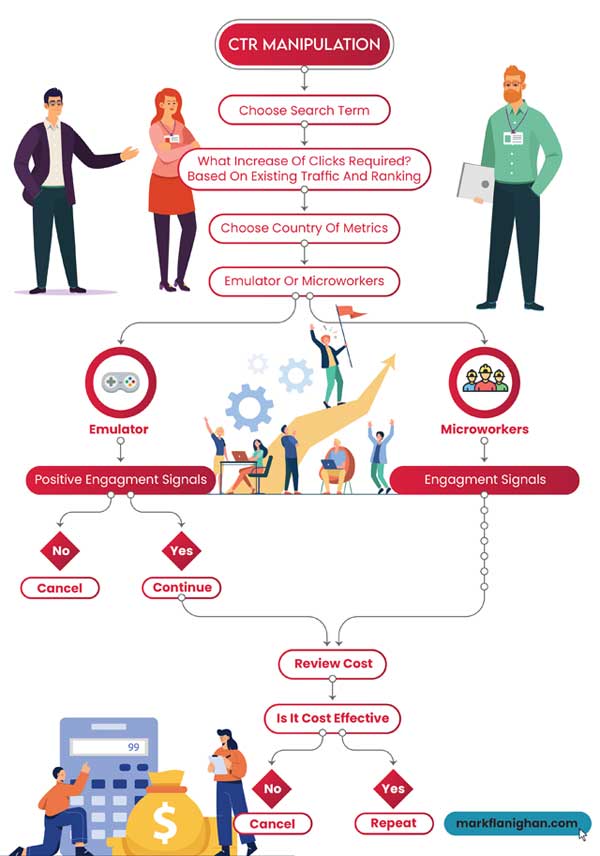Improving Sales With Strategic CTR Control
In the competitive landscape of electronic advertising and marketing, comprehending the subtleties of click-through rates (CTR) is important for driving sales. Strategic control of CTR can lead to enhanced customer involvement and conversion prices, ultimately profiting the lower line.
Understanding Click-Through Price
 Click-through rate (CTR) acts as a critical metric in reviewing the effectiveness of digital marketing campaigns. It represents the ratio of users that click on a particular link to the total number of individuals who view a promotion, e-mail, or page. Revealed as a percentage, CTR supplies useful understandings into audience involvement and the relevance of the content being advertised.
Click-through rate (CTR) acts as a critical metric in reviewing the effectiveness of digital marketing campaigns. It represents the ratio of users that click on a particular link to the total number of individuals who view a promotion, e-mail, or page. Revealed as a percentage, CTR supplies useful understandings into audience involvement and the relevance of the content being advertised.A high CTR indicates that the content reverberates well with the target market, motivating them to take activity. On the other hand, a reduced CTR may signal that the project is misaligned with user assumptions or that the telephone call to activity is ineffective. Several aspects can affect CTR, consisting of the top quality of the ad copy, the attractiveness of visuals, and the positioning of web links within the material.
By assessing CTR information, businesses can recognize which methods are functioning and which require change. As a foundational statistics, CTR plays an important role in the repetitive process of electronic marketing, paving the means for more reliable methods and far better interaction with prospective customers.
Relevance of CTR in Sales
A strong click-through rate straight correlates with sales efficiency, highlighting its importance in the sales funnel. CTR functions as an essential indication of just how effectively an advertising and marketing campaign transforms prospective consumers' rate of interest into actionable actions. A high CTR represents that your audience finds your messaging engaging, which is necessary for driving web traffic to your sales pages.
Furthermore, an elevated CTR can boost brand name presence and authority. When possible consumers involve with your emails or advertisements, it fosters an impact of trust and importance, establishing your brand as a go-to service in the marketplace. This can bring about enhanced customer loyalty and repeat acquisitions, additionally reinforcing sales figures.
In addition, a durable CTR can positively impact search engine rankings and advertisement positioning costs. Greater involvement rates signal to look engines and advertising systems that your content is valuable, enabling you to gain from better positioning and possibly lower prices for clicks.
Techniques for Efficient CTR Manipulation
Reliable manipulation of click-through prices (CTR) entails a tactical mix of engaging material, target market involvement, and data-driven optimization strategies. To start, crafting attention-grabbing headings is vital. A well-structured headline not only stimulates passion but also encourages individuals to click via. Including power words and attending to the target market's pain points can dramatically improve interaction.
Next, utilizing top notch visuals can additionally enhance CTR. Furthermore, utilizing persuasive and clear calls-to-action (CTAs) can guide individuals towards the wanted action.
 Segmenting your audience is another crucial method. LinkDaddy CTR Manipulation. Tailoring web content and uses to details demographics makes sure that the messaging reverberates a lot more deeply, raising the probability of clicks. A/B screening various elements, such as ctas, photos, and headlines, also gives valuable understandings into what drives greater CTR
Segmenting your audience is another crucial method. LinkDaddy CTR Manipulation. Tailoring web content and uses to details demographics makes sure that the messaging reverberates a lot more deeply, raising the probability of clicks. A/B screening various elements, such as ctas, photos, and headlines, also gives valuable understandings into what drives greater CTRStudying Customer Actions
Comprehending customer behavior is vital for enhancing click-through prices and boosting general advertising and marketing approaches. By evaluating exactly how individuals engage with material, marketers can identify patterns, preferences, and discomfort factors that dramatically influence involvement. This evaluation entails analyzing metrics such as time invested on page, scrolling actions, and click pathways to identify what reverberates with the target market.
Division is important in understanding user behavior, as different demographics exhibit one-of-a-kind propensities. For example, younger customers may gravitate in the direction of visually abundant material, whereas older target markets may like clear and simple messaging. A/B screening can further improve insights by contrasting variants in layout, messaging, and call-to-action elements, allowing marketing experts to determine which choices yield higher involvement prices.
In addition, monitoring individual responses via surveys and social networks can provide qualitative information that enhances quantitative findings. Comprehending the emotional triggers that drive user choices is similarly essential; leveraging this knowledge makes it possible for the production of engaging material that encourages clicks.
.svg) Inevitably, a detailed analysis of individual behavior not just help in enhancing click-through prices however likewise informs wider advertising strategies, making certain that projects are tailored to satisfy the evolving needs of the audience.
Inevitably, a detailed analysis of individual behavior not just help in enhancing click-through prices however likewise informs wider advertising strategies, making certain that projects are tailored to satisfy the evolving needs of the audience.Measuring CTR Success
Gauging the success of click-through prices (CTR) calls for an organized technique that builds on insights obtained from individual habits analysis. To efficiently gauge more CTR efficiency, businesses need to develop clear purposes that align with their general marketing goals. This structure makes it possible for companies to track progress over time and make enlightened changes.
Secret performance signs (KPIs) should be specified, consisting of target CTR percentages based upon industry benchmarks. Normal tracking of these metrics is essential, as it enables for the recognition of abnormalities and patterns. By segmenting information according to demographics, gadget kinds, and engagement degrees, organizations can identify which sections perform best and tailor their methods as necessary.
A/B screening offers one more useful device in measuring CTR success. By try out various ad formats, headlines, and calls to action, services can recognize one of the most efficient mixes that reverberate with their target market. Analyzing the correlation in between CTR and conversion rates provides deeper insights right into the effectiveness of advertising and marketing initiatives.
Ultimately, a thorough strategy to gauging CTR success not just improves project performance but also informs future approaches, driving continual organization growth and enhanced customer interaction.
Conclusion
To conclude, critical adjustment of click-through prices (CTR) works as a vital part in improving sales efficiency. By carrying out effective methods such as engaging headlines, high-grade visuals, and targeted messaging, businesses can dramatically improve customer interaction and drive conversions. Additionally, continual analysis of customer behavior and dimension of click here for more CTR success help with continuous optimization of advertising and marketing methods. Eventually, a concentrate on CTR not just boosts instant sales but also adds to lasting consumer commitment and brand authority.
Strategic manipulation of helpful site CTR can lead to increased user involvement and conversion prices, inevitably profiting the lower line. Conversely, a low CTR might indicate that the project is misaligned with individual expectations or that the call to activity is ineffective.Reliable control of click-through rates (CTR) involves a critical blend of compelling web content, targeted audience engagement, and data-driven optimization techniques.Determining the success of click-through prices (CTR) requires a methodical technique that constructs on insights obtained from individual behavior evaluation. Continuous analysis of individual habits and measurement of CTR success promote recurring optimization of advertising strategies.